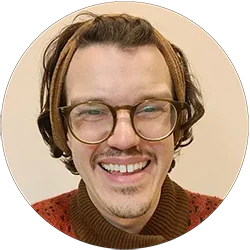In a packed New York auction room in October 2018, a curious portrait with blurred features hung in a gilded frame. The work, “Portrait of Edmond de Belamy,” bore an unusual signature – not a painter’s name, but a mathematical formula. When the gavel fell, the AI-generated portrait sold for an astonishing $432,500, roughly 45 times its high estimate.
Gasps rippled through the crowd. It wasn’t just the price; it was the dawning realization that artificial intelligence art had arrived on the grandest stage of the art world. This landmark Christie’s sale, the first-ever auction of a computer-created artwork, marked a new chapter in art history. The painting’s success proclaimed loudly what many had begun to suspect: AI art is here to stay.
Yet the journey of AI-generated art neither began nor ends with that sale. The mesmerizing world of algorithmic creativity had been quietly evolving for decades, long before algorithms could paint portraits that rival Old Masters.
Today, we stand at a crossroads where code-driven creations spark fascination and controversy in equal measure. In galleries and online forums, observers marvel at surreal dreamscapes conjured by code, while others question whether these digital works have a “soul” or authorship behind them.
This is the tale of how machine learning art transcended novelty to become a permanent brushstroke on art’s grand canvas. It’s a tale of human ingenuity and machine computation intertwined – a digital renaissance unfolding in real time.
Through historical turns, ethical quandaries, expert insights, and cultural shifts, we will explore why AI art has not only burst into the scene, but why it’s poised to redefine creativity for generations to come.
Key Takeaways
-
A New Renaissance Emerges: AI-generated art has erupted onto the grand stage, symbolized by Christie’s 2018 sale of "Portrait of Edmond de Belamy," marking a seismic shift in art history as humans and algorithms blend into unprecedented creative harmony.
-
Echoes of Past Controversies: The tension surrounding AI creativity mirrors historical anxieties sparked by photography’s advent, reminding us that every artistic revolution sparks both awe and existential questioning about human ingenuity and authorship.
-
Collaboration or Competition?: AI's artistic evolution—from early algorithmic experiments in the 1960s to the dazzling generative capabilities of today’s GANs—forces us to redefine the very notion of an artist, raising thrilling yet unsettling questions about originality, intentionality, and authenticity.
-
Ethical and Economic Realities: As AI artistry democratizes creativity, intense debates unfold over intellectual property, the legality of training algorithms on human-made art, and the very real economic consequences for human artists navigating a world increasingly shaped by code-driven creations.
-
Humanity Reflected in the Algorithm: Paradoxically, the rise of AI art invites a profound re-examination of what makes human art intrinsically valuable—emotion, lived experience, and intentionality—challenging us to embrace technology not as a threat, but as a mirror held up to our own creative spirit.
The Evolution of AI Art: Historical Context
 The emergence of AI as an artistic force has upended traditional notions of creativity, dredging up age-old debates about what art is and who deserves credit for its creation. As we dive into the story of AI art – from its humble origins to its meteoric rise – we find a narrative as complex and compelling as any masterpiece.
The emergence of AI as an artistic force has upended traditional notions of creativity, dredging up age-old debates about what art is and who deserves credit for its creation. As we dive into the story of AI art – from its humble origins to its meteoric rise – we find a narrative as complex and compelling as any masterpiece.
Anxieties about art made by non-human means are not new. The interplay between art and algorithms stretches back further than many realize. When photography was introduced in the 19th century, for example, it threatened to upend the art world’s status quo.
The poet and critic Charles Baudelaire warned in 1859 that if photography were allowed to encroach on the realm of image-making, it would “soon supplant or corrupt [art] altogether,” calling the new medium a “stupidity” that the masses might embrace at fine art’s expense.
Baudelaire was not alone – legend has it the painter J.M.W. Turner, upon seeing an early photograph, muttered, “This is the end of art. I am glad I have had my day.”
History, of course, proved such fears unfounded: photography became its own art form, and painting reinvented itself rather than perishing. But the echo of those earlier debates can be heard today whenever skeptics decry AI-generated images as “mere machine output.”
The 1960s
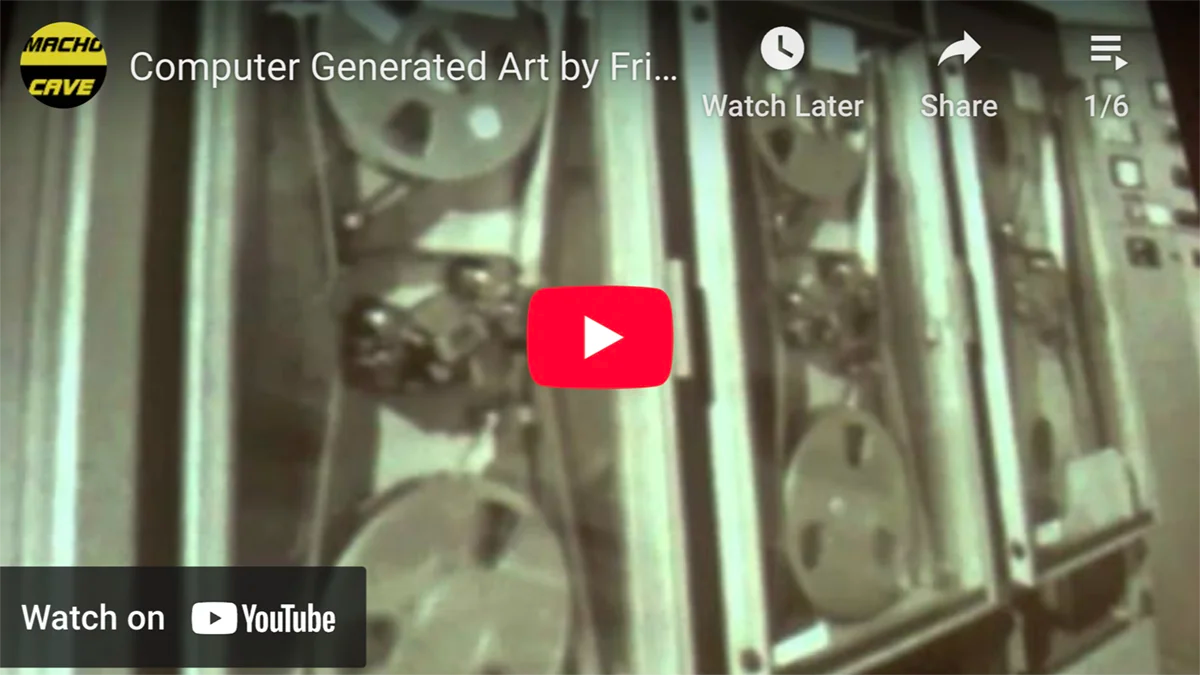 Decades before “AI art” became a buzzword, early pioneers were already coaxing creativity out of computers.
Decades before “AI art” became a buzzword, early pioneers were already coaxing creativity out of computers.
In 1965, German mathematician Frieder Nake exhibited some of the world’s first computer-generated drawings, astounding audiences at a gallery in Stuttgart. That same year, exhibitions of algorithmic art by Nake and others – including Georg Nees and A. Michael Noll – introduced the public to images plotted by room-sized machines rather than painted by hand.
These early forays were confounding and provocative. Critics at the time struggled to understand these strange outputs; one computer art show was described as “bewildering and disturbing,” its significance barely recognized by the traditional art establishment.
The 1970s
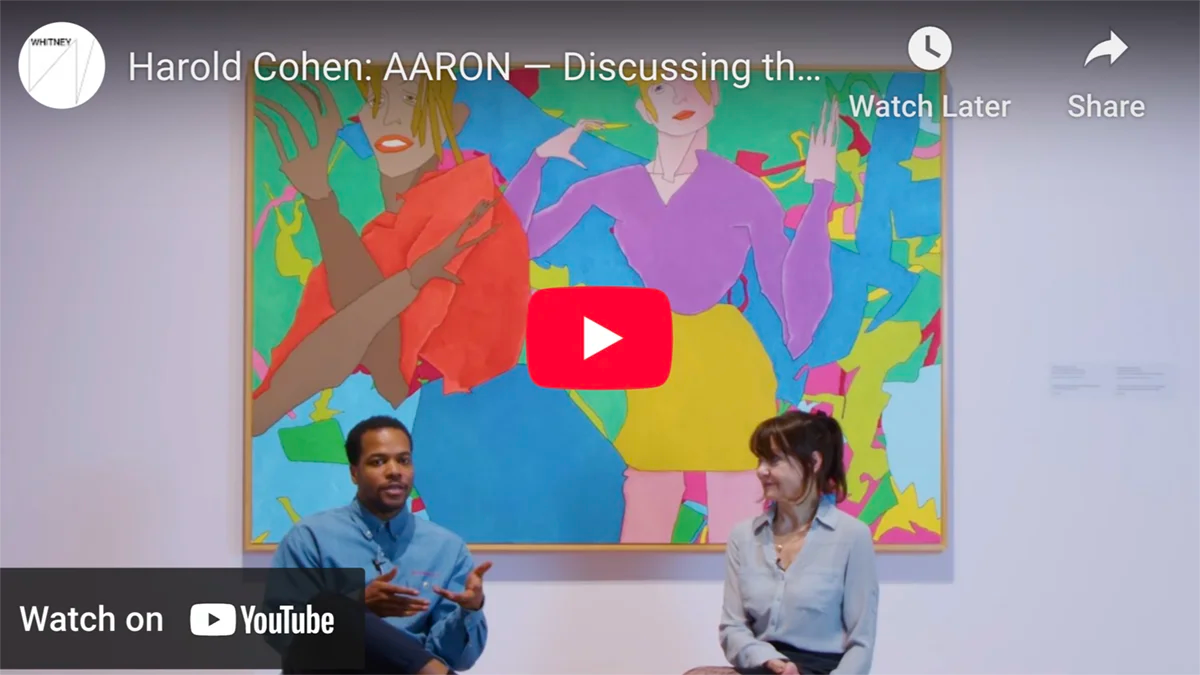 By the 1970s, a few visionaries had begun actively merging art with artificial intelligence. In 1973, British artist and programmer Harold Cohen created AARON, an innovative computer program capable of autonomously drawing and painting. Cohen, a well-respected painter, spent years teaching AARON the rudiments of shape and color.
By the 1970s, a few visionaries had begun actively merging art with artificial intelligence. In 1973, British artist and programmer Harold Cohen created AARON, an innovative computer program capable of autonomously drawing and painting. Cohen, a well-respected painter, spent years teaching AARON the rudiments of shape and color.
The scene is set: an austere computer lab in the early 1970s, where this lone painter-programmer typed code that would make a machine draw. The machine, filling in lines on paper with robotic arms, produced abstract forms that Cohen would sometimes exhibit as art.
This early creative AI system was rudimentary by modern standards – AARON followed explicit rules set by Cohen – yet it raised profound questions: Could a machine genuinely create art, or was it just following code?
Cohen himself came to view AARON as a collaborator of sorts, once suggesting that if a computer’s output showed a recognizable creative “signature” – something he called “entitality” – then perhaps the machine could be considered an artist in its own right. His work pioneered what would later be dubbed algorithmic art, planting the seed that algorithms might someday be partners in the artistic process.
Early 21st Century
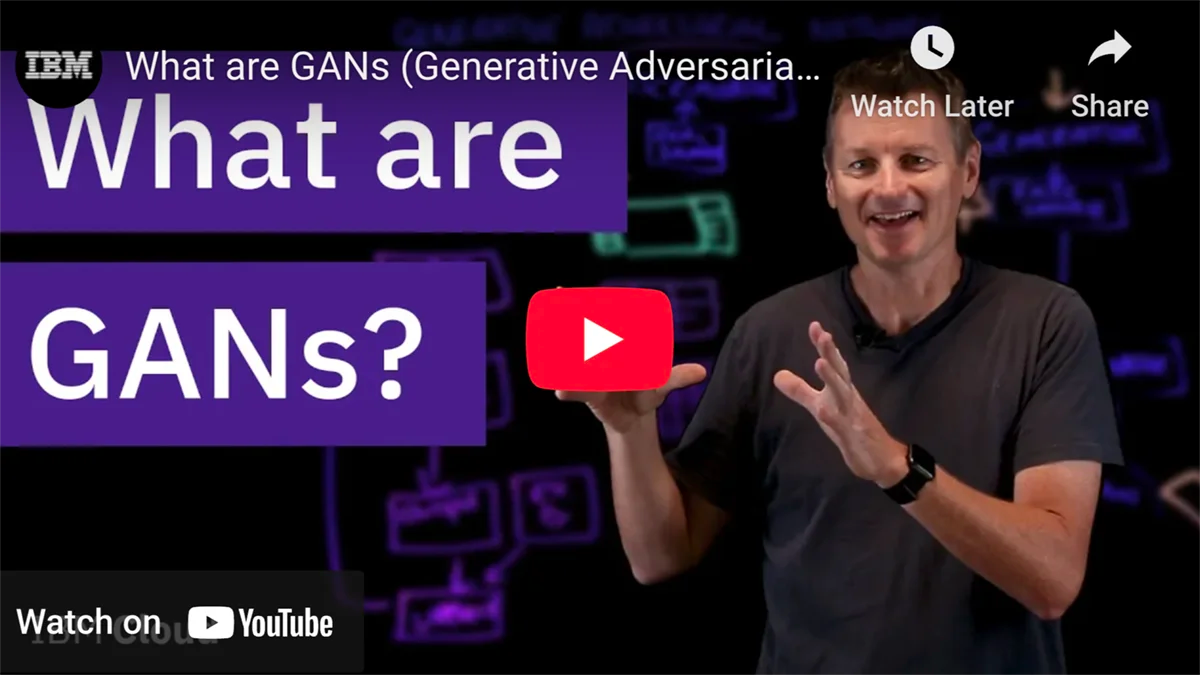 For decades, algorithmic and computer-generated art remained a niche pursuit – practiced by a small cadre of artists, showcased occasionally in avant-garde exhibitions, and often met with confusion or indifference. The broader art world largely treated it as a curiosity. But behind the scenes, technology was rapidly advancing.
For decades, algorithmic and computer-generated art remained a niche pursuit – practiced by a small cadre of artists, showcased occasionally in avant-garde exhibitions, and often met with confusion or indifference. The broader art world largely treated it as a curiosity. But behind the scenes, technology was rapidly advancing.
The early 21st century saw an explosion in computational power and digital art techniques. By the 2010s, the emergence of deep learning art – where programs learn patterns from vast datasets – transformed the capabilities of AI in image-making.
A watershed moment came in 2014, when researcher Ian Goodfellow and colleagues developed Generative Adversarial Networks (GANs). This type of AI algorithm set up a creative “duel” between two neural networks – one generating images, the other judging them – pushing the generator to improve through competition.
GANs were a game changer: instead of programmers hand-coding artistic rules, the machine could learn aesthetics by example. With GANs, AI could now produce images of astonishing complexity, extrapolating from what it had learned in ways even its programmers might not predict.
Almost overnight, what had been painstaking (Cohen’s AARON evolved over years of coding) became relatively accessible. Artists and tinkerers began training GANs on all sorts of imagery – from classical paintings to YouTube videos – watching amazed as the AI generated art that ranged from hauntingly abstract to uncannily realistic.
In 2015, Google’s publicly released DeepDream algorithm turned ordinary photos into hallucinatory visions with a few clicks, hinting at AI’s imaginative potential. By the late 2010s, the aesthetic range of AI art had broadened dramatically.
These systems could produce abstract AI creations that echoed the free-form explorations of an expressionist painter, or attempt stylized figuration by emulating famous artists’ techniques. Spitting out surreal constructs – dreamlike, Dali-esque scenes where faces and forms melt into one another – yet just as easily render hyperreal digitals so crisp that, at first glance, they might be mistaken for high-resolution photographs.
AI art was no longer one style or genre; it was a toolbox capable of infinite styles, limited only by the data it learned from.
Present Day
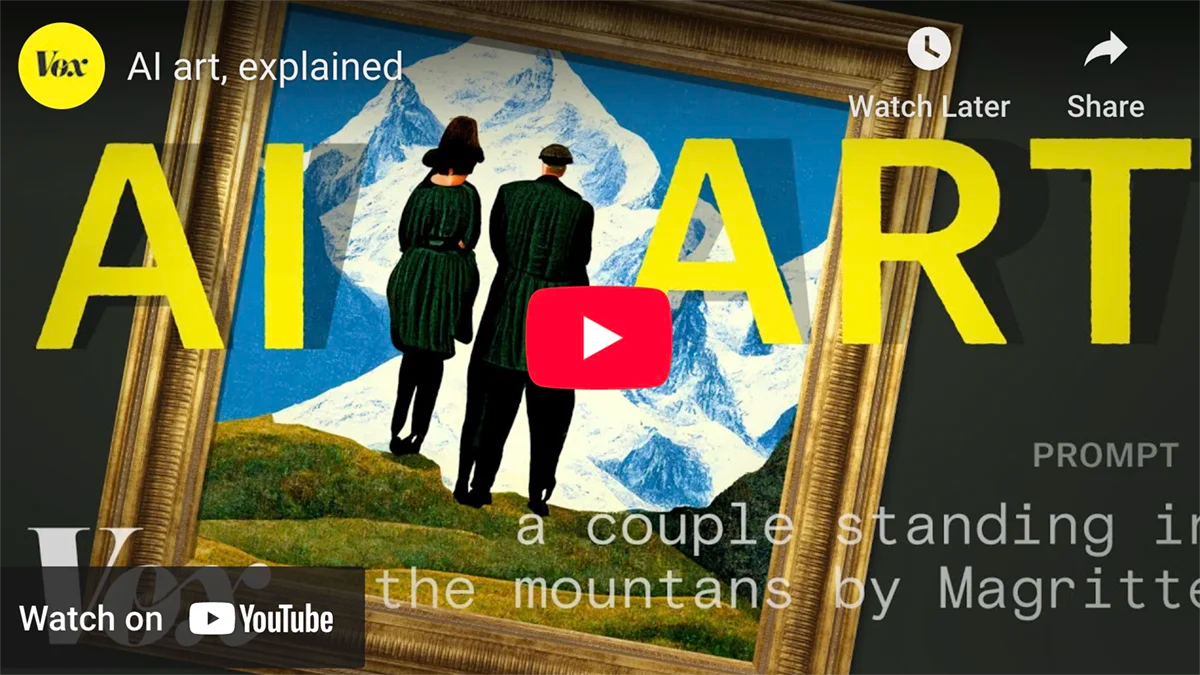 A text-to-image revolution arrived in the early 2020s. In 2021 and 2022, a new generation of AI art tools became available to the public at large. Models like OpenAI’s DALL·E 2, Midjourney, and Stable Diffusion allowed anyone to input a written prompt – a few words describing an imagined scene – and receive a freshly generated image in seconds. No technical expertise was required beyond a bit of creativity and an internet connection. This democratization of AI art created an eruption of public interest.
A text-to-image revolution arrived in the early 2020s. In 2021 and 2022, a new generation of AI art tools became available to the public at large. Models like OpenAI’s DALL·E 2, Midjourney, and Stable Diffusion allowed anyone to input a written prompt – a few words describing an imagined scene – and receive a freshly generated image in seconds. No technical expertise was required beyond a bit of creativity and an internet connection. This democratization of AI art created an eruption of public interest.
By mid-2022, millions of people were experimenting with AI image generators, and social media swarmed with uncanny artworks produced by amateurs and professionals alike. One journalist aptly noted that these developments had come at “breakneck speed,” with DALL·E, Midjourney, and others all released for public use in the span of a year.
The impact was immediate and widespread: digital creativity had entered a new era where the line between artist and audience blurred, and where the role of the human shifted more toward giving ideas than executing brushstrokes.
Ethical and Philosophical Questions of AI-Generated Art
Every disruptive innovation in art brings a host of philosophical dilemmas, and AI art is no exception. As algorithmic creations proliferate, artists, critics, and audiences find themselves wrestling with fundamental questions:
- What does it mean to be an artist?
- Can a machine be creative, or is it just an extension of its human programmer?
- Who owns the art – the person who wrote the code, the one who provided the prompt, or the algorithm itself?
These debates echo 19th-century arguments about photography and art, but with new twists. When an AI can produce a compelling painting in seconds, the issue isn’t just the threat to human labor – it’s a challenge to the very notion of human authorship and artistic intent.
Authorship and Creativity
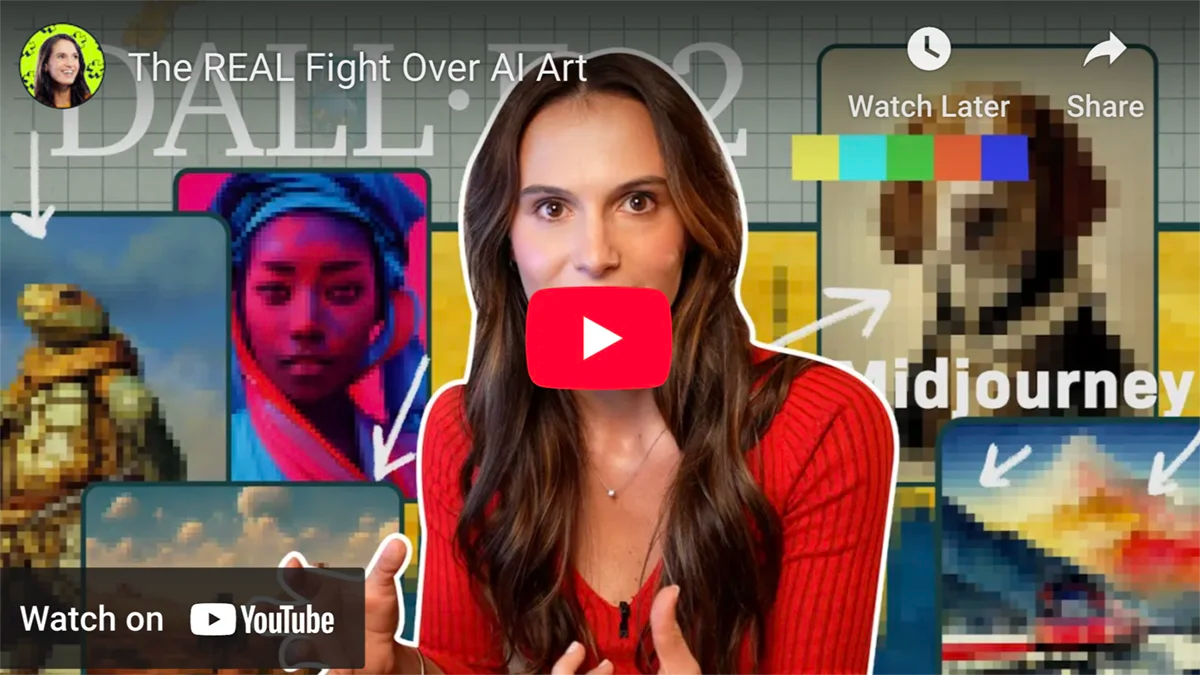 One core controversy is how much creative credit to assign to algorithms. The creators of the “Belamy” portrait famously signed it with the GAN’s loss function (a formula), implicitly crediting the machine. But is the AI truly the artist? Detractors often argue that AI outputs are derivative by nature – the software is mining and remixing existing images – and thus lacks the intentionality and originality we expect from art.
One core controversy is how much creative credit to assign to algorithms. The creators of the “Belamy” portrait famously signed it with the GAN’s loss function (a formula), implicitly crediting the machine. But is the AI truly the artist? Detractors often argue that AI outputs are derivative by nature – the software is mining and remixing existing images – and thus lacks the intentionality and originality we expect from art.
In the case of “Belamy,” some pointed out that the collective behind the work had built their GAN using an open-source codebase by a young artist-programmer, Robbie Barrat, and hadn’t initially credited him. This sparked debate over whether using someone else’s AI algorithm was akin to an artist using another’s brush – or more like plagiarism.
More philosophically, if a painting is generated by an autonomous process, people ask: Who is the true creator? Is it the human who wrote the code, the one who curated the training images, the person who hit “Run,” or the algorithm itself running its quasi-independent course?
Defining the Creator
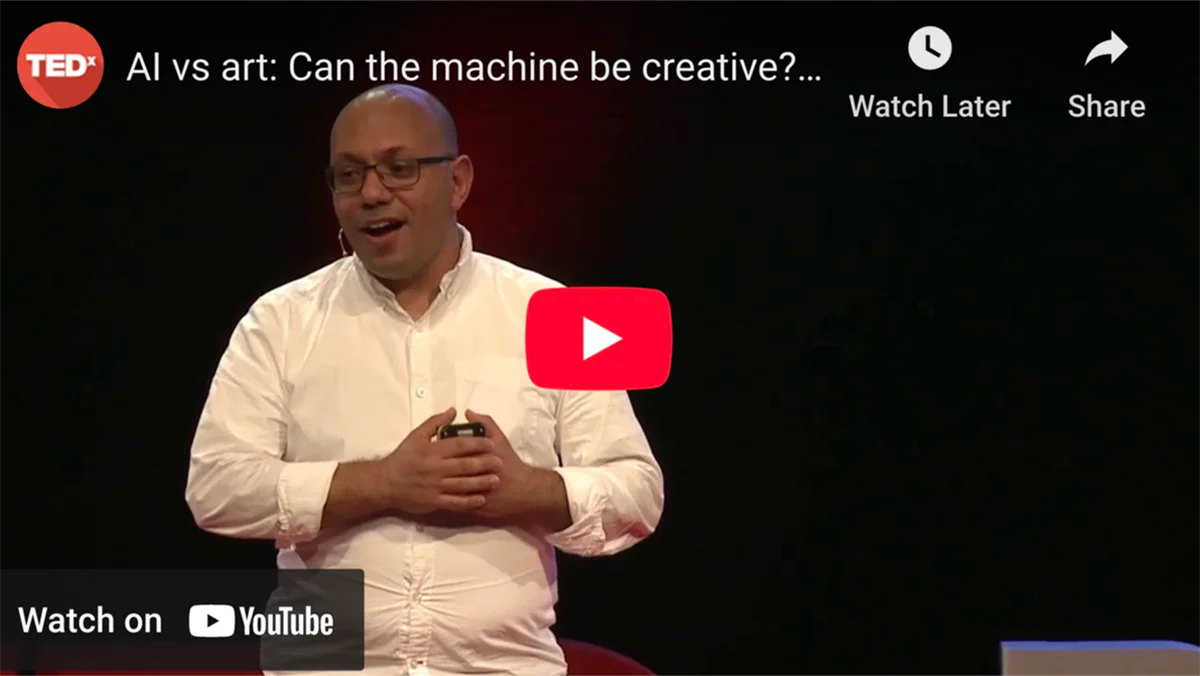 A tricky endeavor. AI artwork’s very existence forces a reassessment of our ideas of authorship. "If the work was truly authored by this string of numbers and letters, does it matter who built and trained the AI?" one journalist mused during the Christie’s sale. There are no easy answers – the boundaries between AI, artists, and AI-produced art are still amorphous.
A tricky endeavor. AI artwork’s very existence forces a reassessment of our ideas of authorship. "If the work was truly authored by this string of numbers and letters, does it matter who built and trained the AI?" one journalist mused during the Christie’s sale. There are no easy answers – the boundaries between AI, artists, and AI-produced art are still amorphous.
Artists and observers are split. Some purists maintain that without a human guiding hand at every step, the result cannot be considered “art” in the meaningful sense. They argue that creativity requires consciousness, intention, and lived experience – qualities a machine does not possess. As evidence, they note that when a GAN produces, say, a series of distorted faces, it has no idea why it’s doing so.
The British figurative painter Francis Bacon deliberately deformed faces in his paintings to provoke emotion; a GAN often does it simply because it hasn’t learned to represent faces perfectly. The difference is intent. Indeed, AI researchers themselves acknowledge this gap.
Ahmed Elgammal, an expert in AI art, observed that while GAN-generated portrait mutants can evoke Bacon’s style in their novelty and strangeness, there’s “something missing” – namely the lack of artistic intention behind those deformities. The algorithm’s output might look like art, but did it mean anything by it? If art is defined by the intent and self-expression of the artist, a machine’s creations present an ontological conundrum.
On the other hand, proponents of AI art argue that creativity can take many forms, and the tool used doesn’t negate the artistic merit. They point out that artists have always relied on tools and external processes – from cameras to paintbrushes to darkroom chemical reactions – and that algorithms are just a more complex tool. In this view, the human is still very much present in AI art, just in a different capacity. Instead of wielding a brush, the artist curates a dataset and fine-tunes parameters.
The act of choosing what the AI will learn from and which outputs to exhibit is itself an expressive artistic act. “The artist’s hand is involved in the selection of input images, tweaking the algorithm and then choosing from those that have been generated,” Elgammal explains, describing a workflow of “pre-curation” and “post-curation” around the algorithm’s generative process. In other words, an AI artwork may have multiple authors – the programmer, the end-user, and the algorithm – each contributing in a different way to the final piece.
Some artists working with AI liken it to directing a natural process: they set the stage and let the algorithm perform, intervening at critical moments. Who, then, is the creator? Perhaps it is a partnership of human and machine.
As Harold Cohen once suggested, if the machine’s output carries a distinct character (one that might even be recognizable as the machine’s “style”), then maybe we can start to consider the algorithm itself an artistic entity – albeit one initiated by humans.
Originality and Datasets
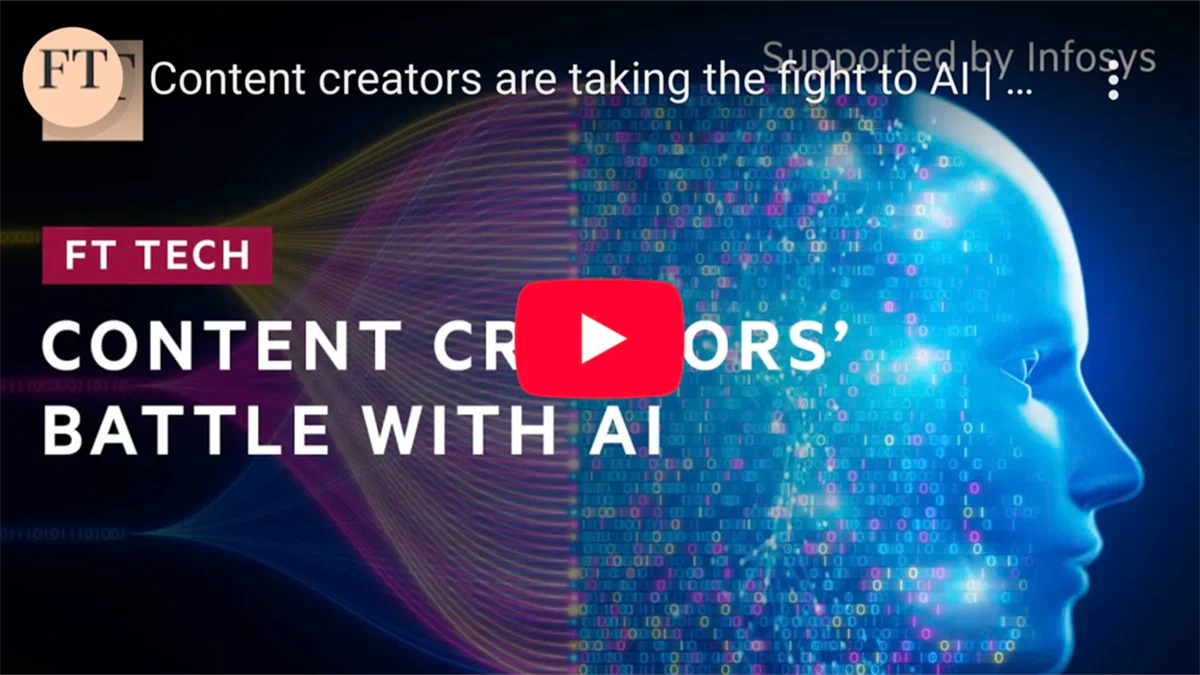 Another ethical quandary centers on how AI learns to create. Most art-generating AIs are trained on large datasets of existing images – often scraped from the internet or museums. This raises the issue of intellectual property and consent. Is an AI artwork truly “original” if it was derived from thousands of pre-existing works?
Another ethical quandary centers on how AI learns to create. Most art-generating AIs are trained on large datasets of existing images – often scraped from the internet or museums. This raises the issue of intellectual property and consent. Is an AI artwork truly “original” if it was derived from thousands of pre-existing works?
When a GAN produces a new image, it doesn’t copy any single source image outright, but it does build on patterns in its training data. This has led some critics to call AI art a form of “glorified collage” or “automated pastiche.” More concretely, artists and photographers have begun to ask: What about the millions of human artworks that AI systems ingest without permission?
Addressing the use of copyrighted materials in machine learning datasets without consent has become a pressing issue. In early 2023, Getty Images – a major stock photo agency – filed a high-profile lawsuit against Stability AI, the company behind Stable Diffusion, accusing it of infringing copyright on 12 million photographs used to train the AI without a license. Tellingly, some AI-generated images even retained distorted remnants of the Getty watermark, clear evidence of the provenance of their training data.
Getty’s lawsuit argues that wholesale scraping of copyrighted content to fuel a commercial AI product is illegal, and they are seeking staggering damages in the billions.
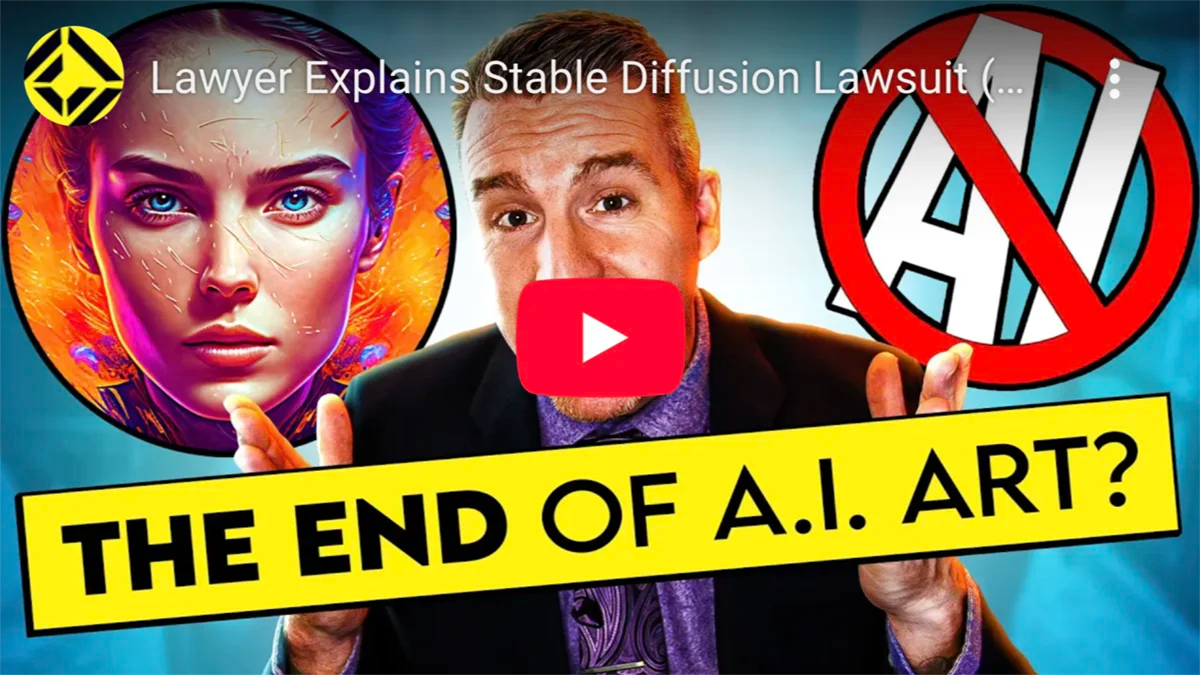 In a parallel action, a group of artists filed a class-action suit in California against several AI firms, claiming that these companies violated the rights of creators by using their art to train AI without compensation.
In a parallel action, a group of artists filed a class-action suit in California against several AI firms, claiming that these companies violated the rights of creators by using their art to train AI without compensation.
This is new legal territory. Copyright law never anticipated a scenario where a non-human entity might be generating derivative works en masse. Courts and regulators are now playing catch-up. The U.S. Copyright Office has weighed in, recently affirming that works created entirely by AI – with “purely AI-generated material” and no human revision – cannot be protected by copyright, because the law only recognizes human authorship.
In a 2023 decision, officials emphasized the need for a “human expression” in a work of art for it to qualify as original and protected. They clarified that if an AI is used as a tool in the creation (for instance, an artist edits or guides the AI output significantly), then the human-authored portions can be copyrighted – but an image that an algorithm generates on its own from a text prompt is not eligible. This stance essentially puts AI art in the public domain unless a human’s creative input is clearly evident.
The ruling has major implications: an illustrator who simply submits AI images to a client might not have legal ownership of those images at all, whereas an artist who paints over or collages AI outputs would.
As the technology outpaces legislation, we are witnessing a rapid evolution of how intellectual property is defined. Lawsuits like Getty’s will likely set important precedents for how copyright in AI art is handled, and whether new regulations will require clarifying how copyright law can protect the unique expressions of AI while respecting the rights of human artists moving forward.
Impact on Artists and Society
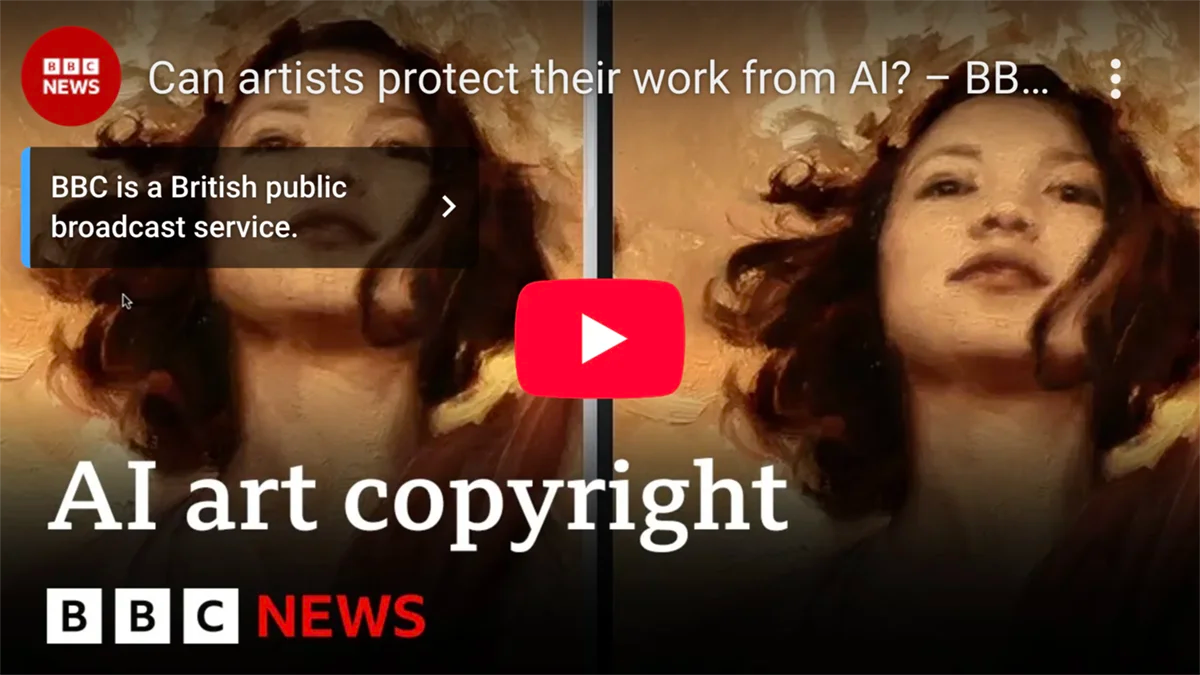 Ethical debates also extend to the cultural and economic realm. Will AI art threaten artists’ livelihoods? This question haunts many in creative industries. Illustrators, concept artists, graphic designers – these are professions already seeing disruption.
Ethical debates also extend to the cultural and economic realm. Will AI art threaten artists’ livelihoods? This question haunts many in creative industries. Illustrators, concept artists, graphic designers – these are professions already seeing disruption.
In 2022, an artwork generated with Midjourney (an AI tool) won first prize in a digital art competition at a state fair in Colorado, beating out human artists and stirring outrage among some contestants. To them, it felt like a harbinger that human artists would be undercut by machines that can produce passable art at the push of a button.
There are parallels in history that offer both warning and comfort. In the 19th century, portrait painters indeed saw a sharp decline in demand once photography became widespread – by the 1850s, photographic portrait studios had largely replaced painted miniatures and silhouettes for the middle class, a shift that was widely accepted with little regret.
Painting didn't die after photography arrived. Artists moved on to explore realms photography couldn’t reach (Impressionism, abstraction, etc.). Similarly, in the 20th century, synthesizers and drum machines threatened to replace musicians; some feared “the end of music,” but in time these tools became just another part of the artist’s palette. AI in the creative industry will follow the same pattern.
Many contemporary artists believe that rather than making human creatives obsolete, AI will spur a creative renaissance by freeing artists from mundane tasks. Augmented creativity is a term often used – the idea that AI can handle labor-intensive aspects (like iterating variations or filling in details), allowing artists to focus on higher-level creative decisions.
In this optimistic view, a fashion designer might use AI to generate scores of pattern ideas, then select and refine the best ones – ending up with designs she might never have imagined solo. An architect could quickly visualize concepts using AI, then use human judgment to develop the most inspiring forms. The role of the artist shifts from craftsman to director or curator of creative AI, as some have suggested.
Many artists insist that sufficiently talented creatives will want to collaborate with AI rather than compete with it. Just as photographers mastered the camera and graphic designers mastered Photoshop, the artists of tomorrow may need to master working with generative algorithms. Those who do could achieve results faster and explore ideas more broadly than ever before.
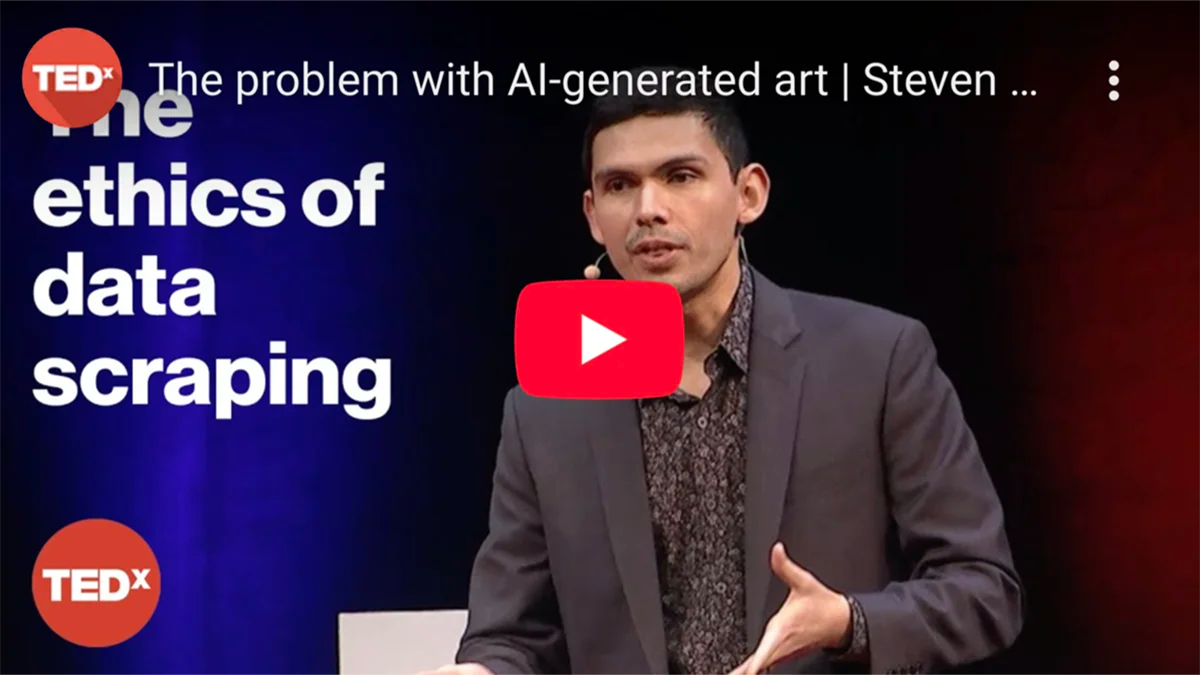 Nevertheless, the anxiety is real. Does an AI’s efficiency endanger the livelihoods of creative professionals? If a book publisher can commission a dozen cover concepts from an AI in minutes rather than pay an illustrator, some will do so – at least for simpler projects. If a game studio can have an AI generate background art or concept sketches, that might reduce the number of entry-level artists they hire. Over time, could reliance on AI erode the development of human skills?
Nevertheless, the anxiety is real. Does an AI’s efficiency endanger the livelihoods of creative professionals? If a book publisher can commission a dozen cover concepts from an AI in minutes rather than pay an illustrator, some will do so – at least for simpler projects. If a game studio can have an AI generate background art or concept sketches, that might reduce the number of entry-level artists they hire. Over time, could reliance on AI erode the development of human skills?
Detractors worry about a future where mass-produced AI visuals flood the market, leading to a glut of art that is superficially attractive but conceptually shallow – and making it harder for human artists to compete for attention or income.
There is also a cultural concern: art is one of the defining expressions of humanity. If more and more art is generated by machines, do we lose a bit of what makes art special? Is there something irreplaceable about the human touch, the presence of an artist’s hand and mind, that an AI, however sophisticated, can never replicate?
The ethical debates surrounding AI art are thus deeply entangled with philosophical questions about creativity and practical concerns about economics and law. Around every corner are more questions:
- Should AI art be clearly labeled as such?
- Is using an artist’s style in an algorithm a form of theft or a creative homage?
- How do we ensure diversity and fairness in datasets so AI art doesn’t inadvertently reinforce biases (a known issue when algorithms are trained on unbalanced data)?
These ongoing conversations indicate that society is still in the process of deciding how to integrate AI into the creative fold. What is abundantly clear is that AI has forced everyone to reflect on what artistic authenticity means. Paradoxically, by “challenging the artist’s role,” AI may be helping to clarify what truly matters in human creativity – those aspects of emotion, context, and intent that algorithms, for now, struggle to emulate.
Voices from the Art World: Expert Insights and Perspectives
Amid the swirl of controversy, voices across the art world – from avant-garde artists to critics and curators – are offering their perspectives on this AI-driven transformation. These insights provide a nuanced understanding of how AI is reshaping creativity. Some experts are enthusiastic evangelists of the new technology, others are cautionary skeptics, and many fall somewhere in between, acknowledging both the remarkable opportunities and the unresolved tensions that AI art presents.
The Pioneers – Embracing the Algorithmic Muse
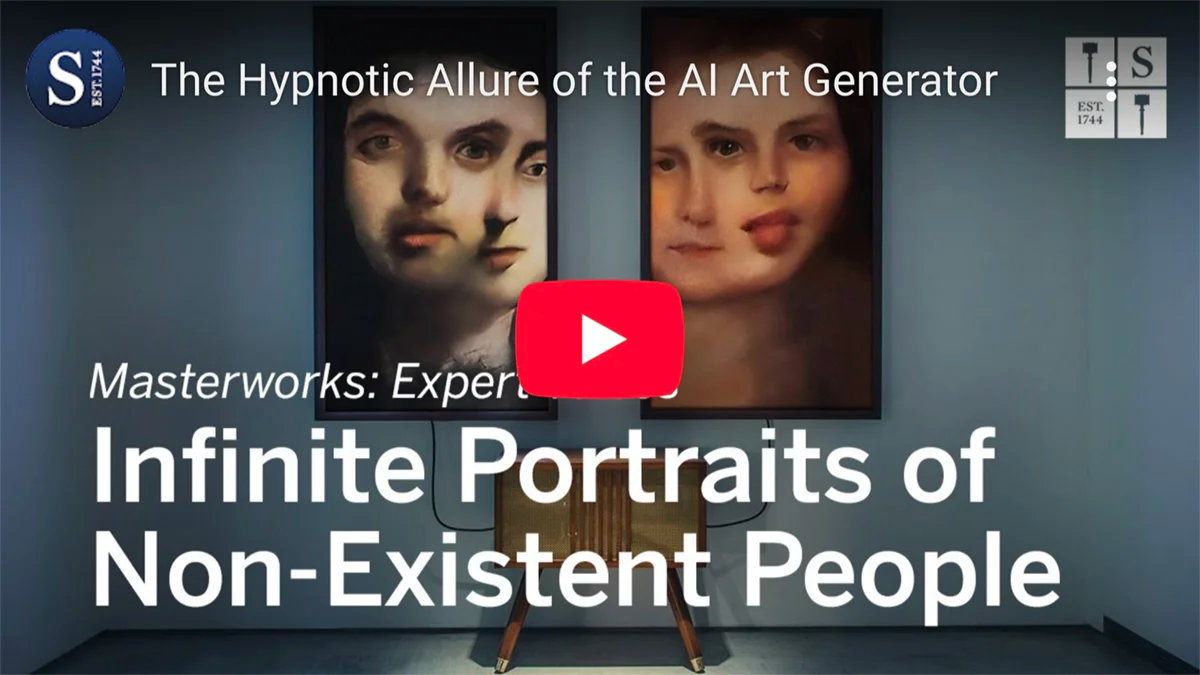 A number of contemporary artists have built their practice around AI, treating the algorithm as a collaborator or even a muse. One prominent example is Mario Klingemann, a German artist often lauded as a pioneer of AI art. Klingemann has painstakingly optimized the process of creating art with neural networks, and he speaks about it as a new form of artistic expression he calls “neurography”.
A number of contemporary artists have built their practice around AI, treating the algorithm as a collaborator or even a muse. One prominent example is Mario Klingemann, a German artist often lauded as a pioneer of AI art. Klingemann has painstakingly optimized the process of creating art with neural networks, and he speaks about it as a new form of artistic expression he calls “neurography”.
In 2018, he debuted Memories of Passersby I, an AI-driven installation consisting of two screens that endlessly display an evolving stream of portraits – faces of people who never existed, continuously generated by a GAN. To create this piece, Klingemann trained the neural network on thousands of historical portraits from the 17th to 19th centuries and spent months refining the system. He even implemented a feedback mechanism akin to swiping left or right – effectively a Tinder-style curation – to teach the AI which outputs aligned with his own artistic taste.
The result is an autonomous artwork that “dreams” new faces in real time, each ephemeral image appearing for a moment before morphing into the next. “It’s like watching an endless imagination take place in the mind of a machine,” Sotheby’s wrote of the piece, noting that the human subject matter (the faces) adds poignancy to the idea of a computer dreaming about people.
Klingemann’s work, which blends human input with algorithmic generation, exemplifies the collaborative potential of AI: he set the creative constraints and imparted his aesthetic sensibilities to the machine, and the machine in turn produces surprises that fuel Klingemann’s artistic exploration. When Memories of Passersby I was auctioned by Sotheby’s in 2019, it fetched about $51,000, signaling that the art market was beginning to take this new art form seriously.
Klingemann commented that the sale validated AI art as not just a gimmick but an art movement gaining profile. As someone who has spent years writing code and curating outputs, he often emphasizes that working with AI is not about pressing a button – it’s an iterative, creative process requiring vision and discernment at every step.
 Another influential voice is Anna Ridler, a British artist who works extensively with GANs but with a twist – she generates her own training datasets by hand. In her acclaimed project The Fall of the House of Usher (2017), Ridler created a 12-minute video animation using a GAN trained exclusively on her own ink drawings. She drew over two hundred images inspired by the 1929 silent film adaptation of Edgar Allan Poe’s story, then fed those drawings into a GAN to produce the animation framesannaridler.com.
Another influential voice is Anna Ridler, a British artist who works extensively with GANs but with a twist – she generates her own training datasets by hand. In her acclaimed project The Fall of the House of Usher (2017), Ridler created a 12-minute video animation using a GAN trained exclusively on her own ink drawings. She drew over two hundred images inspired by the 1929 silent film adaptation of Edgar Allan Poe’s story, then fed those drawings into a GAN to produce the animation framesannaridler.com.
The resulting piece flickers and decays, with forms appearing and disappearing in eerie black-and-white abstraction. Ridler was intentionally exploring the “fugitive aspects of memory” and the way images degrade – thematically appropriate for Poe’s tale of decay.
Crucially, Ridler has spoken about why she chose AI for this project: the machine learning process introduced a controlled unpredictability that served her artistic concept. “It is a piece that could have been hand-animated,” she writes, “but by choosing machine learning I was able to heighten and increase these themes around the role of the creator, the reciprocity between art and technology, and aspects of memory in a way that would not be available to me otherwise.”
In other words, using AI allowed Ridler to push the artwork into new conceptual territory – the algorithm’s tendency to “forget” or distort the drawings over time became a feature of the art itself, symbolizing memory fading. She also highlights something profound: the role of the creator changes when using AI.
By curating the dataset (her drawings) and letting the GAN interpret them, Ridler is exploring a hybrid authorship. She notes an interest in how the process “illustrates the dynamics between the human creator and the machine”, and she embraces the unpredictability of the outcome. Ridler’s practice demonstrates that AI art can be deeply personal and concept-driven – far from hitting “randomize,” it can involve careful planning and a dialogue between artist and algorithm.
Her work has been exhibited in museums and galleries worldwide, and she stands as an example of an artist who sees creative algorithms not as a threat, but as a means to enrich artistic expression.
The Enthusiasts – Art Professionals and Technologists
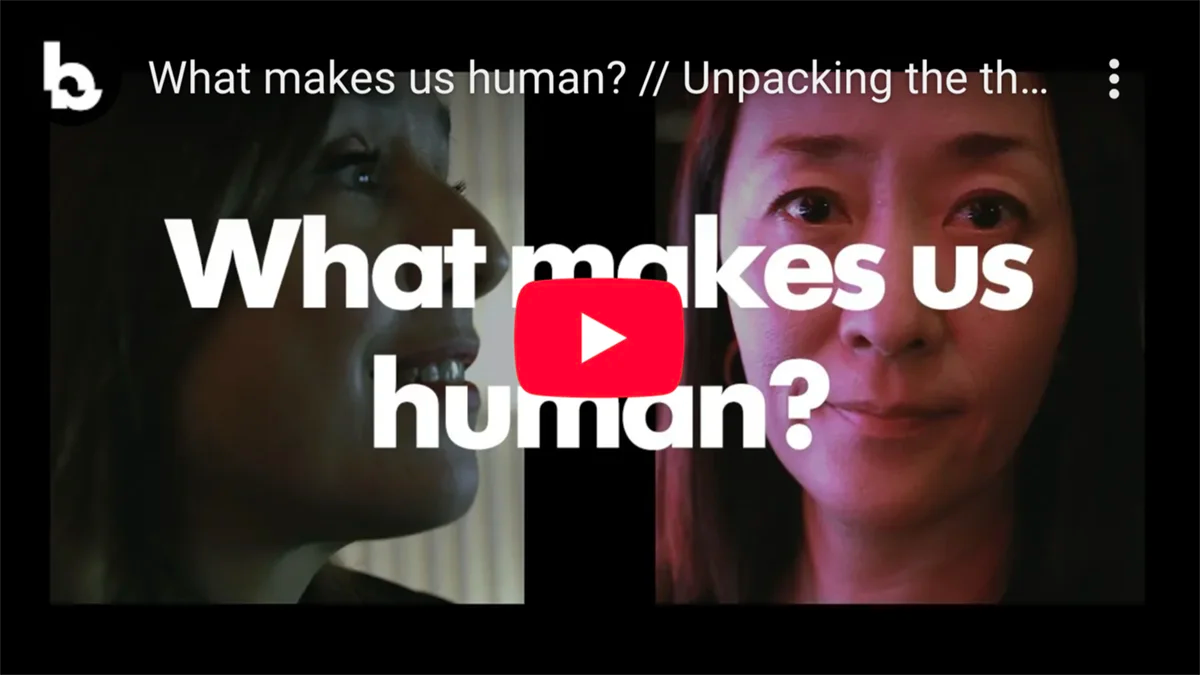 It’s not just artists; many curators and technologists have also become champions of AI art’s potential. In 2019, the Barbican Centre in London staged a blockbuster exhibition titled “AI: More Than Human.” This show was an unprecedented survey of artificial intelligence’s creative and scientific facets, featuring numerous AI-driven artworks. It invited visitors to engage hands-on with installations – from drawing machines to interactive artworks that responded to their presence.
It’s not just artists; many curators and technologists have also become champions of AI art’s potential. In 2019, the Barbican Centre in London staged a blockbuster exhibition titled “AI: More Than Human.” This show was an unprecedented survey of artificial intelligence’s creative and scientific facets, featuring numerous AI-driven artworks. It invited visitors to engage hands-on with installations – from drawing machines to interactive artworks that responded to their presence.
The public’s response was telling: over the few months of its run, the exhibition drew more than 88,000 visitors, making it one of the Barbican’s most successful shows ever. Clearly, there is a hunger to experience and understand this new form of art.
Curators of the exhibit emphasized that AI was not presented as just a tech novelty, but as part of a continuing story of art and innovation – tracing roots from ancient automatons and early computing to today’s creative AI. Such institutional embrace lends credibility to AI art.
Major museums like the Smithsonian have also held panels and displays on AI creativity, and auction houses (Christie’s, Sotheby’s) have published thoughtful essays on the implications of AI for art and valuation.
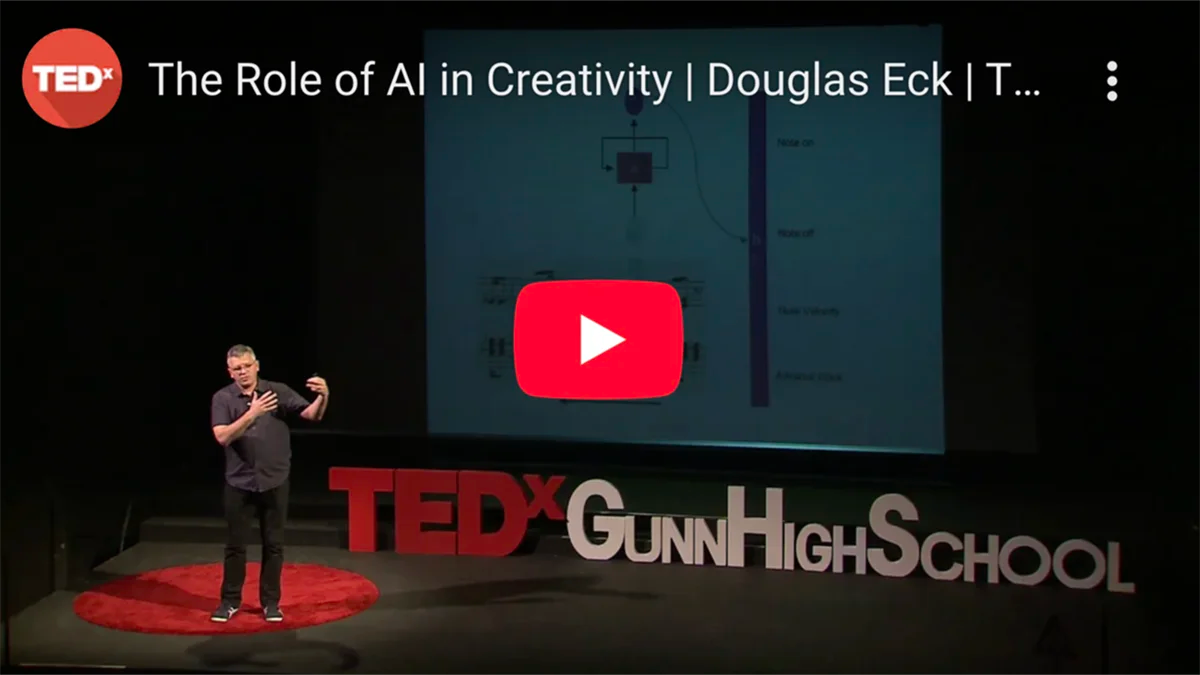 Academics in art history and digital culture are increasingly viewing AI art as a legitimate area of study, comparing it to previous art movements that were once controversial (e.g. Dada, conceptual art).
Academics in art history and digital culture are increasingly viewing AI art as a legitimate area of study, comparing it to previous art movements that were once controversial (e.g. Dada, conceptual art).
Tech industry figures, for their part, often express a kind of awe at what their algorithms have become capable of – an awe that sometimes edges into advocacy for AI as a creative partner.
Goodfellow, the inventor of GANs, famously conceived the idea while imagining how two neural nets might “spar” with each other; that adversarial dynamic turned out to be a recipe for surprising creativity.
Other AI researchers like Douglas Eck (who leads Google’s Magenta project on AI music and art) have spoken about “democratizing art creation” – they foresee a future where everyone can be a creator with the help of AI, much as smartphones turned everyone into a photographer.
This enthusiasm is grounded in the belief that AI can expand the boundaries of art. Machine learning algorithms can detect patterns and combinations that humans might not think of, yielding novel styles and forms.
Some liken the use of AI to the advent of new artistic mediums: just as the synthesizer added new sounds to music, AI offers new visuals and even new concepts of what an image can be (for instance, morphing continuously, or visualizing data in artistic ways).
In interviews, these technologists often stress collaboration: AI won’t replace artists; it will give them superpowers. It can generate “magic” in seconds – but it’s up to the human to decide what kind of magic matters.
The Skeptics – Warnings and Critiques
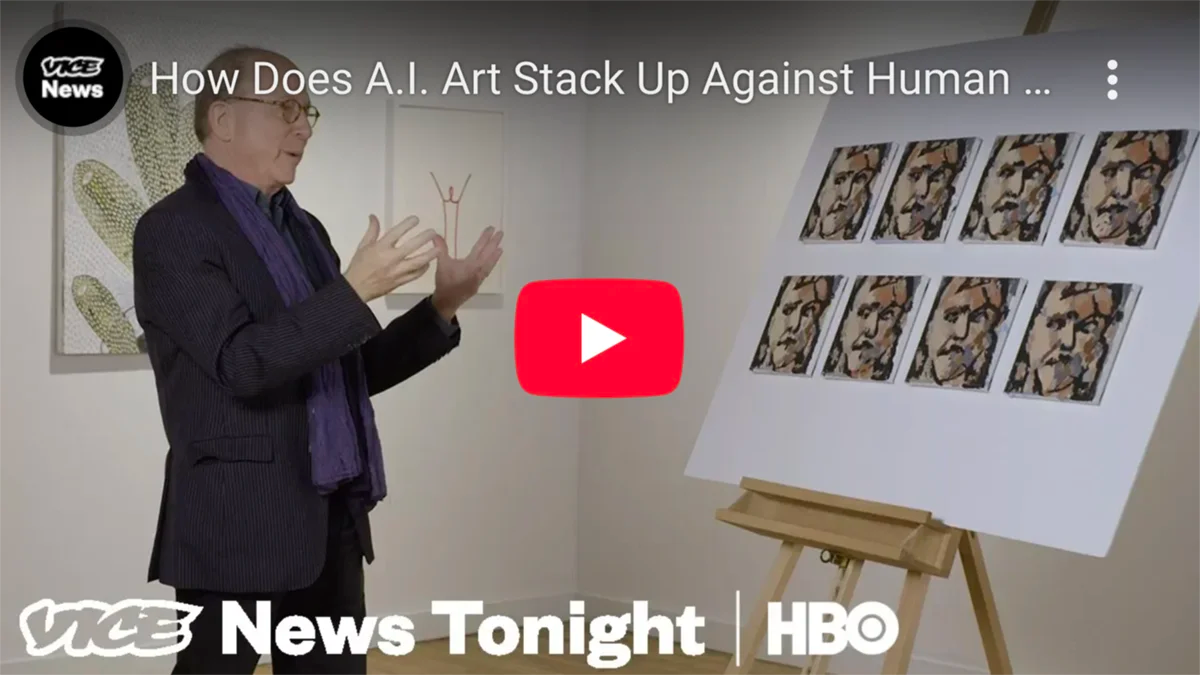 On the flip side, many prominent figures in the art world remain skeptical or critical of AI art. Perhaps the most vocal are some art critics and certain traditional artists. Jerry Saltz, the Pulitzer-winning art critic for New York magazine, gave a scathing take on the celebrated Belamy portrait.
On the flip side, many prominent figures in the art world remain skeptical or critical of AI art. Perhaps the most vocal are some art critics and certain traditional artists. Jerry Saltz, the Pulitzer-winning art critic for New York magazine, gave a scathing take on the celebrated Belamy portrait.
Dismissing it as “100 percent generic”, Saltz argued that the portrait was essentially a blurry mash-up offering nothing truly new or meaningful. To him, it was a bland pastiche that rode on the novelty of being AI-made – an “empty” work propped up by a gimmick.
Saltz’s critique echoes a common sentiment: that much of AI art, at least so far, looks derivative or feels conceptually shallow. Detractors point out that an AI can imitate styles but doesn’t decide to, say, subvert a style for a reason; it has no message to communicate.
When confronted with AI pieces, skeptics often ask, “Where is the artist’s voice in this? What is it saying?” If those questions can’t be answered, they are inclined to dismiss the work as mere output rather than art.
Some museum curators have also expressed reservations. In reviews of “AI: More Than Human,” for instance, a Guardian critic admired the interactivity but noted “little sign of creativity amid the technological spectacle,” concluding that the show threw a lot at the audience but raised doubts about whether AI could truly be self-aware or creative in the human sense.
In essence, the skepticism isn’t about whether AIs can produce striking images – they clearly can – but whether those images have the depth, context, and communicative power that we associate with great art.
There is also an ideological critique coming from some artists and scholars: the concern that AI art might valorize the wrong values. If the art world embraces AI-generated works, are we celebrating creativity, or are we celebrating technology for its own sake?
Some fear a slippery slope toward valuing clever algorithms over humanistic content. Additionally, the question of bias is raised: if an AI is trained on Western art history, will it disproportionately echo Western aesthetics and ignore other cultural perspectives, thus reinforcing a narrow view of art? Also, is there a risk that art generated by popular demand (via prompts) could trend toward cliché?
Skeptics urge cautious, critical engagement with AI art rather than uncritical hype. They remind us that art has always been about human experience – about seeing the world through another’s eyes – and they question whether an AI, which has no life experience, can offer any real insight or perspective. This camp doesn’t necessarily reject AI as a tool (many accept it has its uses), but they remain unconvinced that a machine’s output can move us in the way that human art can.
As one Oxford University study on AI and art put it, “Artists cannot be replaced by machines… You cannot – for now – transfer life experience into data”. The caveat “for now” is doing a lot of work in that statement, encapsulating both doubt and the acknowledgement that we should never say never.
The Balanced View
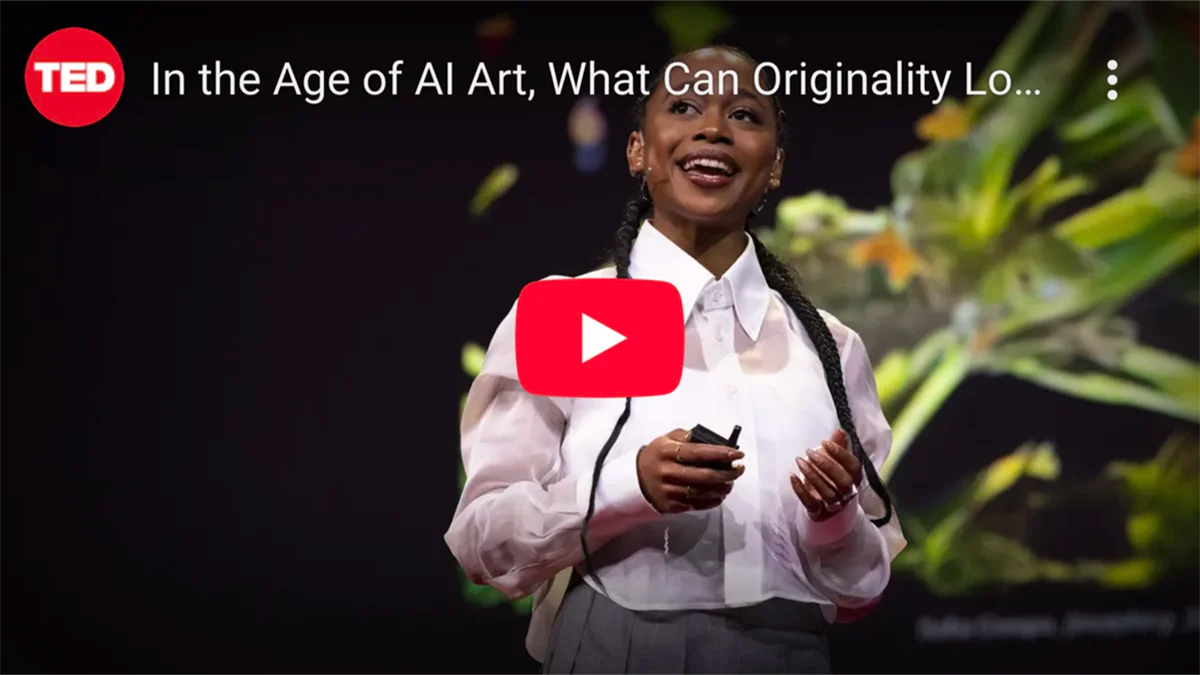 Many experts take a middle ground, acknowledging the remarkable achievements of AI art while also emphasizing the enduring value of human creativity. For example, museum curators who have acquired AI art pieces often contextualize them as part of an ongoing dialogue. They might say: This piece is interesting not just because AI made it, but because of how it engages with art history or with current social issues.
Many experts take a middle ground, acknowledging the remarkable achievements of AI art while also emphasizing the enduring value of human creativity. For example, museum curators who have acquired AI art pieces often contextualize them as part of an ongoing dialogue. They might say: This piece is interesting not just because AI made it, but because of how it engages with art history or with current social issues.
The best AI artists often imbue their projects with conceptual frameworks or commentary – for instance, using AI to make a point about surveillance, or about the nature of memory (as Ridler did). Curators tend to respond to that layering.
Art historian and media scholar Christiane Paul, who has curated digital art for decades, notes that AI art is just the latest in a lineage of computational art forms and should be evaluated like any other art – by its content, context, and execution, not merely by the novelty of its medium. She and others stress that art is more than the sum of its parts: feeding famous paintings into a model and getting something that resembles a van Gogh does not automatically make it art in a deep sense.
What matters is how the artist (human) frames and uses AI’s capability. This nuanced stance basically says: Yes, AI is a powerful new tool that can produce visual outputs; no, not every output is automatically great art; human creativity and discernment remain paramount. AI can be seen as a new kind of paintbrush or a new camera – one that can do incredibly fancy things, but still under the guidance (and restraint) of human vision.
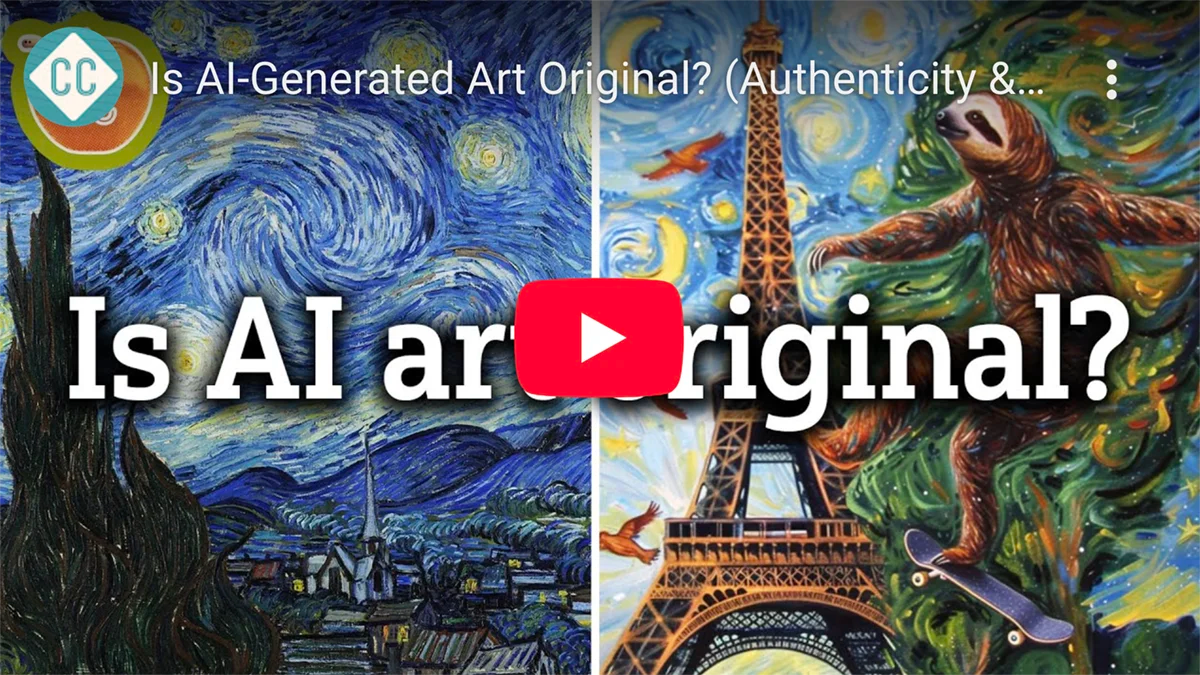 From the perspective of some philosophers of art, AI art has even revived old debates in aesthetics: it forces us to ask, Is the value of art in the process of creation or in the end product?
From the perspective of some philosophers of art, AI art has even revived old debates in aesthetics: it forces us to ask, Is the value of art in the process of creation or in the end product?
If one believes it’s largely in the end product’s ability to move an audience, then perhaps an AI artwork that astonishes or moves people is inherently valuable, regardless of who/what made it.
If one believes the process and the artist’s intention are critical, then AI-generated pieces might feel hollow. The discussion harks back to debates over whether we can separate art from artist – here, the “artist” might not exist as a person at all.
In summarizing the chorus of expert opinions, it seems clear that AI art is provoking a healthy, if intense, discourse. It has galvanized technologists who see it as a triumph of innovation, excited many artists who find in it new possibilities, and alarmed or disenchanted others who worry about what is lost when creation is outsourced to code. This dialog itself is valuable; it is pushing the art community to articulate what we cherish about human-made art, while also opening our eyes to alternative modes of creation.
As with any disruptive technology in art – from photography to digital editing – the initial shock and hype gradually give way to a more measured understanding of the medium’s strengths and limits. We are in the midst of that process now with AI art, and the expert insights gathered so far will help shape a more mature view of this phenomenon in the years to come.
![]() Meanwhile, the general public’s reactions cover the full spectrum. There is genuine fascination with the potential new forms of expression AI art introduces, and broad admiration for the technological prowess and innovation behind these works – one cannot help but be impressed when a computer conjures an image that looks like a Renaissance painting or a fantastical landscape never seen before. At the same time, there is skepticism about whether AI can truly be “creative.”
Meanwhile, the general public’s reactions cover the full spectrum. There is genuine fascination with the potential new forms of expression AI art introduces, and broad admiration for the technological prowess and innovation behind these works – one cannot help but be impressed when a computer conjures an image that looks like a Renaissance painting or a fantastical landscape never seen before. At the same time, there is skepticism about whether AI can truly be “creative.”
Many viewers ask: if the art is generated by pre-existing data and algorithms, is it really creating anything or just remixing? Along with that skepticism comes some outright rejection of the idea that AI-generated works should be considered fine art at all; a portion of the public feels that art without a human soul behind it is inherently void of authenticity.
Social media discussions on AI art often ping-pong between awe (“This is amazing – a computer made this!”) and ire (“This image is cool, but it’s not art, the computer doesn’t know what it’s doing.”).
Importantly, as AI art becomes more common, the initial wonder might fade, and people will likely judge AI works by higher standards than novelty. This maturing public perception will demand that AI art prove itself on artistic grounds, not just technological ones – a challenge that serious practitioners of AI art seem eager to meet.
AI in the Art Industry: Market Impact and Future Trajectory
Beyond questions of creativity and ethics, the rise of AI art is reverberating through the art industry and market. From how art is made and sold, to how it is displayed and experienced, the art world is adapting to this new reality. AI in the art industry stands at an intersection of commerce, technology, and culture, bringing both disruption and opportunity.
Art market embraces AI (Cautiously)
 The successful auction of Edmond de Belamy in 2018 was the art market’s attention-grabbing introduction to AI art, but it was not a one-off. In the years since, there have been a string of notable sales and the emergence of specialized marketplaces for AI-generated works.
The successful auction of Edmond de Belamy in 2018 was the art market’s attention-grabbing introduction to AI art, but it was not a one-off. In the years since, there have been a string of notable sales and the emergence of specialized marketplaces for AI-generated works.
In March 2019, just a few months after the Christie’s event, Sotheby’s in London offered Mario Klingemann’s Memories of Passersby I in a contemporary art sale. The work sold for £40,000 (around $51,000). While modest compared to the Belamy price, it proved that multiple major auction houses saw value in this new medium. Sotheby’s even placed Klingemann’s piece alongside works by well-known contemporary artists in the sale, signaling that they viewed it as part of the contemporary art dialogue, not just a tech curiosity.
Since then, galleries have started to represent AI artists (for example, the Gazelli Art House in London took on Harold Cohen’s estate and has exhibited AARON’s drawings). Online platforms too, such as Art Blocks for algorithmic generative art and various NFT marketplaces, have become venues where AI art is traded – sometimes fetching significant sums, especially during the 2021 crypto art boom.
Collectors are gradually coming around to AI art, though the market is still young. Early buyers often tend to be tech-savvy or intrigued by the crossover of art and science. Some are drawn by the historical significance – owning “the first of something” (like the first AI portrait to be auctioned). Others appreciate the visuals or concepts of the works genuinely, regardless of the medium.
Interestingly, a new breed of collector is emerging that specifically seeks out digital and AI art, analogous to those who collected video art or light art in earlier decades. Auction houses have begun including AI art in thematic sales about digital art or even in mainstream contemporary sales when the piece warrants it.
The prices, aside from the headline-grabbing Belamy sale (which some argue was an outlier driven by novelty and publicity), have been generally in line with what one might expect for prints or editions by emerging artists. That said, as more famous artists incorporate AI, market dynamics could shift. If, for instance, an established contemporary artist like Damien Hirst or Jeff Koons produced a series of AI-generated works, collectors might scramble to acquire them due to the name recognition, further validating AI as a medium.
For now, AI-generated art sales represent a tiny fraction of the multi-billion dollar global art market. But their symbolic impact is outsized. They have forced auction houses and galleries to grapple with questions of how to catalogue such works (who is listed as the artist? how to describe the medium and provenance?).
In most cases, the human who conceived or directed the project is listed as the artist, often with an explanation like “with the assistance of artificial intelligence” or a description of the algorithm used. Provenance might include the name of the algorithm or codebase, which is a new wrinkle for art records.
Insurance and conservation are another area: How do you “conserve” a piece that exists as code or a model that might need specific hardware to run decades from now? Forward-thinking collectors and museums are already considering the challenges of preserving digital art, including AI works, so they remain accessible in the future despite rapid technology changes.
Democratization and the Creative Economy
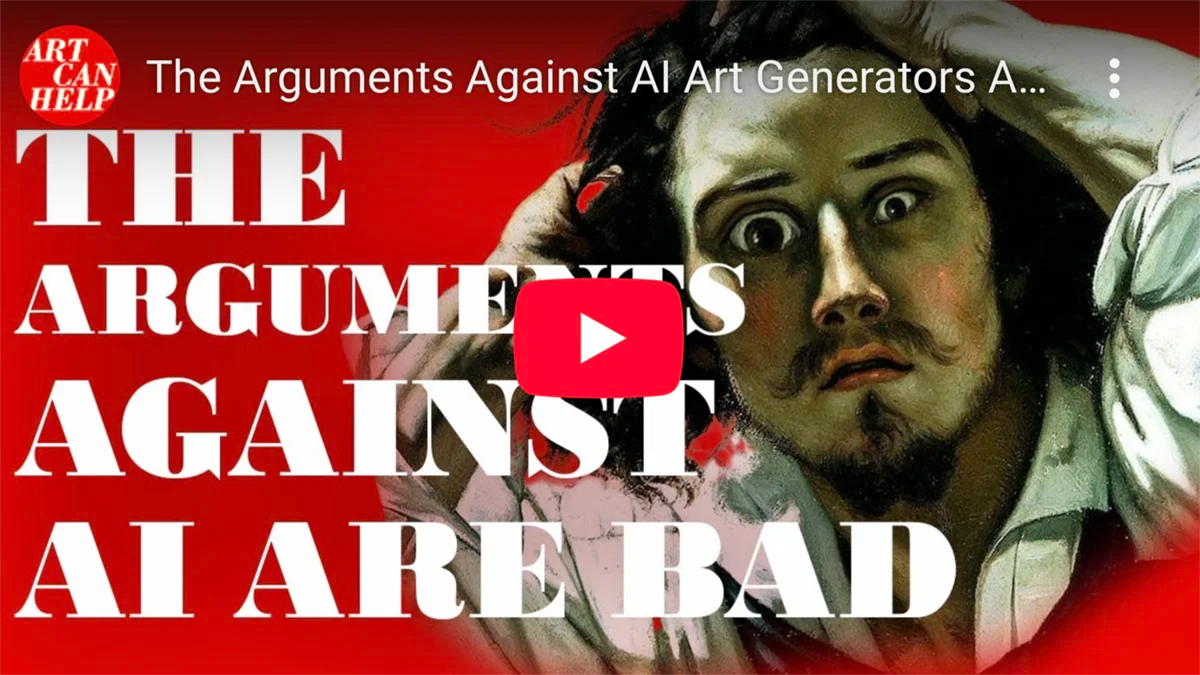 One of the most significant industry impacts of AI art is the democratization of content creation. Just as desktop publishing and Photoshop once put graphic design tools into the hands of people who weren’t professional designers, AI art generators are enabling people with no traditional art training to create compelling images. This could lead to a glut of visual content online – indeed, we are already seeing an explosion of AI-generated images on social media, blogs, and marketing materials. For the industry, this means that the entry barriers to producing “art-like” imagery are lower than ever. An individual or a small business can generate custom illustrations without hiring an artist, for better or worse.
One of the most significant industry impacts of AI art is the democratization of content creation. Just as desktop publishing and Photoshop once put graphic design tools into the hands of people who weren’t professional designers, AI art generators are enabling people with no traditional art training to create compelling images. This could lead to a glut of visual content online – indeed, we are already seeing an explosion of AI-generated images on social media, blogs, and marketing materials. For the industry, this means that the entry barriers to producing “art-like” imagery are lower than ever. An individual or a small business can generate custom illustrations without hiring an artist, for better or worse.
This democratization is a double-edged sword. On one side, it means a flourishing of creativity from new voices. Niche communities have formed around creating art with AI, sharing tips for getting the best results from prompts, and curating the outputs into collections. There’s a sense of empowerment – someone who “can’t draw” can now realize their visual ideas using an AI tool.
On the other side, it raises the bar for what counts as truly original artistry. When anyone can conjure a pretty landscape or a fantasy portrait in minutes, professional artists may need to emphasize those qualities of art that AI alone can’t provide: narrative depth, emotional resonance, a distinct personal style, or multi-layered symbolism. In a way, it challenges human artists to dig deeper into what makes their perspective unique.
Changing Creative Workflows
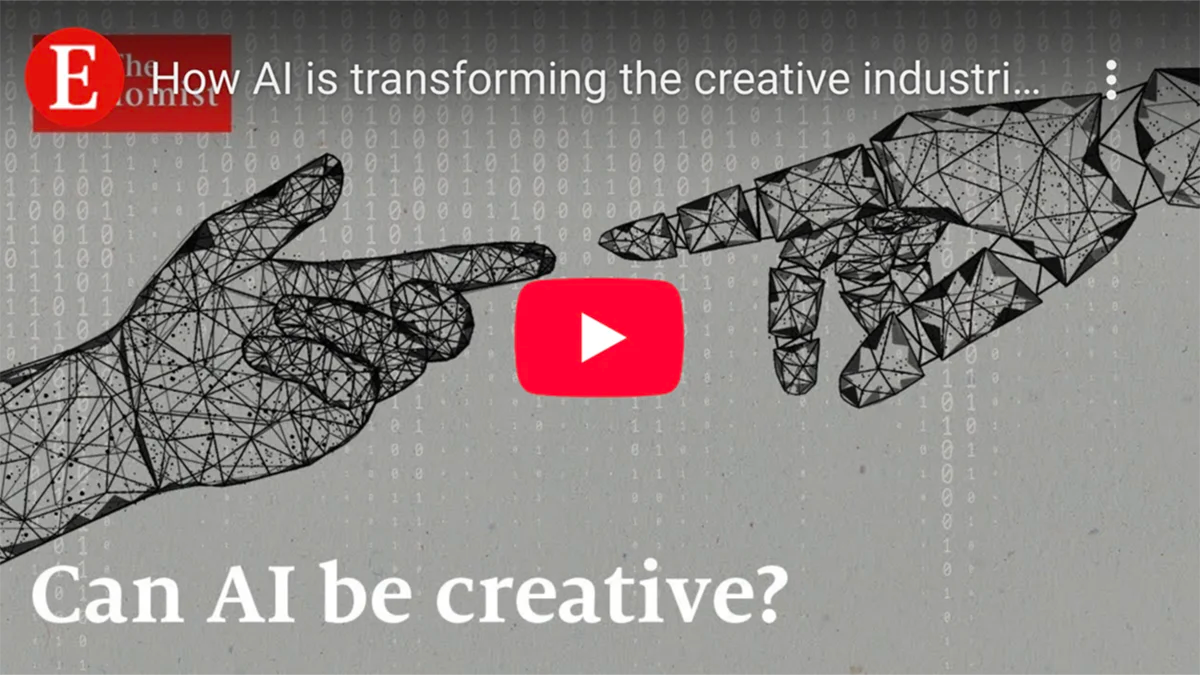 In creative industries like advertising, film, and design, AI tools are increasingly being integrated into workflows. Concept artists in film and gaming, for instance, have started using AI image generators to get rapid concept sketches which they then paint over or refine. This hybrid method can drastically cut down the time needed to iterate ideas.
In creative industries like advertising, film, and design, AI tools are increasingly being integrated into workflows. Concept artists in film and gaming, for instance, have started using AI image generators to get rapid concept sketches which they then paint over or refine. This hybrid method can drastically cut down the time needed to iterate ideas.
Graphic designers might use AI to generate patterns, backgrounds, or rough layouts which are then finalized by hand. Photographers can use AI to enhance or alter images (though this bleeds into the contentious area of deepfakes if not careful). In architecture and product design, generative algorithms (an aspect of AI) have been used for years to optimize forms – now more user-friendly AI tools can generate visualizations that spark new design solutions.
The term “creative coding” has been around for a while, referring to writing code to produce art and design; AI brings a layer of learned intelligence to creative coding, making it more accessible to those who aren’t traditional programmers but can work with AI models or scripting interfaces.
What’s emerging is a picture of augmented artists: creatives who pair their own skill sets with AI assistance. Just as photographers learned to use Photoshop, now artists are learning to use AI. Those who embrace the technology often report that it extends their capabilities. It can suggest color palettes or compositions they might not have tried, or quickly show how an idea would look in various styles.
The artist, in turn, applies judgment to select and polish the outcomes. In many cases, this speeds up production – which could be seen as economically threatening (fewer billable hours) or as a chance to take on more projects and experiment more freely. Some illustrators worry, for example, that clients will expect faster turnarounds if AI is involved, potentially squeezing timelines. Others find they can increase their output or explore side projects with the time saved.
Interactive and Experiential Art
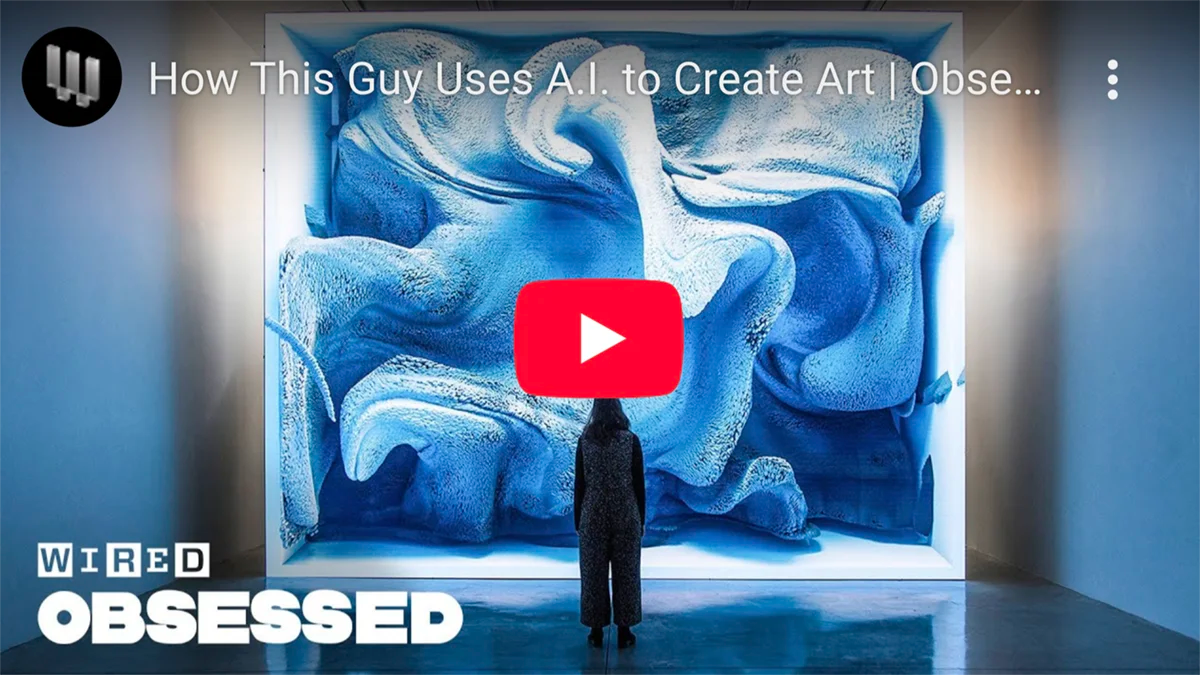 AI is also transforming not just how art is created, but how it is experienced. With advances in computer vision art and real-time processing, we are seeing interactive media installations where the artwork can respond to the viewer. For instance, an installation might use AI to “see” the people in a gallery space and change its visuals or sound accordingly – a kind of digital mirror that evolves with audience interaction.
AI is also transforming not just how art is created, but how it is experienced. With advances in computer vision art and real-time processing, we are seeing interactive media installations where the artwork can respond to the viewer. For instance, an installation might use AI to “see” the people in a gallery space and change its visuals or sound accordingly – a kind of digital mirror that evolves with audience interaction.
Immersive art installations turn spectators into participants; the art isn’t a static object but a dynamic experience co-created in the moment by the machine and the viewer. An example could be a projection in a public plaza that visualizes live data (like the movement of passersby or environmental data) in artistic ways, essentially a digital installation for public spaces that is ever-changing and site-specific.
The rise of VR (virtual reality) and AR (augmented reality) also intersects with AI. In VR art exhibitions, “virtual curators” powered by AI might guide visitors or even generate exhibition layouts on the fly. Interactive virtual exhibitions online allow people anywhere in the world to experience art in simulated galleries, sometimes with AI-driven elements that personalize the tour.
An online gallery might rearrange or recommend artworks based on a viewer’s preferences using AI, making each virtual visit unique. In performance art, we are seeing real-time generative performances – imagine a live dance or theater piece where the visuals (and even music) are being generated by an AI in sync with the performers’ movements or emotions.
In one recent experiment, a jazz musician improvised with an AI that generated accompanying visuals and melodies live, effectively jamming together in a cross-domain duet. These kinds of performances blur the line between human and machine creativity on stage, thrilling audiences with something that feels spontaneous and alive.
Education and Skill Development
 The art industry also encompasses education – training the next generation of artists. Art schools and creative writing programs are beginning to integrate AI literacy into their curricula. Professors are introducing AI art generators as educational tools for artistic learning, allowing students to experiment with these systems and critically evaluate the results. The goal is to prepare young artists to engage with AI thoughtfully – both using it and questioning it.
The art industry also encompasses education – training the next generation of artists. Art schools and creative writing programs are beginning to integrate AI literacy into their curricula. Professors are introducing AI art generators as educational tools for artistic learning, allowing students to experiment with these systems and critically evaluate the results. The goal is to prepare young artists to engage with AI thoughtfully – both using it and questioning it.
By learning how to use an AI art generator or how to train a simple model, students gain insight into the technology that is increasingly shaping their field. Some institutions have even held student exhibitions of AI-assisted art, prompting discussions on authorship and originality in the classroom.
The inclusion of AI in curricula is a recognition that today’s art students will likely encounter these tools in their professional lives, and being adept with them (or at least understanding their capabilities and limitations) will be part of being a competent artist or designer in the 21st century.
We also see new interdisciplinary courses popping up, often collaborations between art departments and computer science or engineering departments, where students can learn both the technical and creative aspects of AI art. Such programs treat AI not just as a tool to be used, but as a subject to interrogate – exploring its history, its biases, its philosophical implications. This educational trend ensures that the future art industry will have professionals who are not only skilled in using AI, but are also equipped to shape its development ethically and artistically.
The Road Ahead
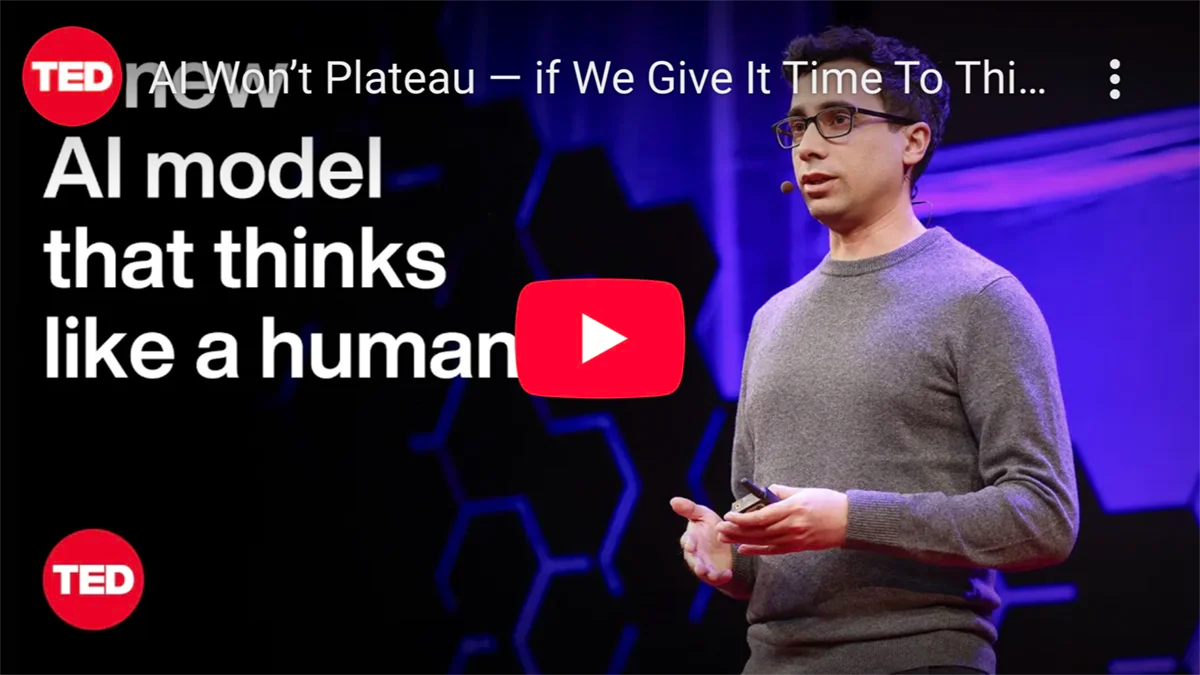 Looking forward, how might AI further shape the art industry? One likely trajectory is the continued growth of AI-curated content platforms. As the volume of art (human-made and AI-made) online becomes overwhelming, we might rely on AI to curate personalized art feeds for consumers.
Looking forward, how might AI further shape the art industry? One likely trajectory is the continued growth of AI-curated content platforms. As the volume of art (human-made and AI-made) online becomes overwhelming, we might rely on AI to curate personalized art feeds for consumers.
Imagine an app that learns your aesthetic preferences and shows you daily art from around the world, some of which might be AI-generated just for you. This raises intriguing possibilities for niche art markets and commissioned art: instead of buying a print that thousands of others have, you could have an AI generate a custom artwork in the style you love, just for you, essentially an edition of one.
Mass customization could become a service – a sort of Pandora/Spotify for visual art, but with generative capabilities. It challenges the traditional model of selling limited editions or unique works through galleries, but it could open up new business models (subscription-based art, for instance).
The role of galleries and agents might also evolve. We could see AI agents as art brokers, analyzing market trends and advising collectors on acquisitions, or even negotiating sales autonomously (though that’s perhaps farther in the future and would require trust in AI’s judgment).
It’s not far-fetched that an AI might predict which emerging AI artist (or human artist) is likely to rise in value, by analyzing patterns across social media, exhibition reviews, and past sales – essentially doing big data analysis to inform art investment. While the art market has always been somewhat unpredictable and driven by human taste makers, the influx of data could allow more analytical approaches.
Conversely, the human element may become even more of a premium. In a future saturated with AI-generated visuals, truly hand-crafted art or art with a compelling human story might become more valued as a kind of luxury. We could envision a scenario where AI handles so much creative production that human-made art is seen as akin to artisanal goods – treasured for its scarcity and the direct touch of a human creator. The industry might bifurcate into high-end human art and mass-tailored AI art for everyday use, each with its own market.
AI is weaving itself into the art industry in multifaceted ways: it’s altering creation, distribution, exhibition, and education. The artistic landscape is expanding, not contracting – we are getting new genres (like AI-generated conceptual art), new tools for artists, and new experiences for audiences. Just as digital art eventually found its place alongside painting and sculpture, we can expect AI art to integrate into the fabric of the art world.
It won’t be long before we stop talking about “AI art” as a novelty and start talking about individual artworks, some of which happen to be made with AI, judged on their own merits. The path to that point will involve adjustment and probably a few more headline-grabbing controversies, but if history is a guide, the fusion of AI and art will continue to mature and surprise us in equal measure.
A New Synthesis of Art and Intelligence
As we stand on the cusp of this new era in the arts, one thing is evident – AI art is not a passing fad, but a transformative force that is here to stay. In little more than a decade, we have witnessed AI move from the fringes of experimental new media into the very center of artistic discourse.
What began in research labs and obscure gallery installations has burst into auction houses, museums, and millions of homes via online platforms. This rapid ascent underscores an important truth: the boundless potential of human and machine collaboration is reshaping creativity in ways we are only beginning to understand.
The story of AI art is, in many ways, a story about human innovation and adaptability. Each time technology has challenged the definition of art – whether through the invention of photography, film, digital imaging, or now artificial intelligence – artists have responded not by surrendering, but by evolving.
AI, far from replacing human creativity, has become a catalyst for expanding it. Artists have discovered that algorithms can be partners that augment their imagination, helping them explore forms and ideas beyond their solo reach. In turn, human artists imbue those algorithmic processes with narrative, context, and emotion – qualities a machine alone cannot grasp. The result is a symbiosis of AI and human artistry, a new kind of creative duet where the strengths of each compensate for the limitations of the other.
Through historical parallels, we’ve seen that initial fears of “the end of art” tend to give way to a richer landscape where old and new coexist. Just as the emergence of photography pushed painting toward new frontiers instead of annihilating it, the rise of AI-generated art is pushing human artists to emphasize what is uniquely human in their work, even as they adopt the new tools.
It is telling that many artists who work with AI describe the process as revealing: it forces them to reflect on their own style and decision-making, to guide the machine with clarity, and to curate from its deluge of possibilities. In doing so, they often come to a deeper understanding of their own artistry.
The cultural significance of AI art thus lies not only in the novel images or installations it produces, but in how it prompts us to reflect on creativity itself – to ask what we value in art, what the role of the artist is, and how technology can enhance (rather than diminish) our creative spirit.
Yes, there are genuine concerns and ongoing debates – about authorship, authenticity, ethics, and economics – and these will continue to evolve as the technology and its use cases develop. The controversies, from copyright battles to philosophical sparring over whether an AI can be “creative,” are a sign of a healthy engagement with the challenges posed by a powerful new capability.
Society is collectively negotiating new norms and understandings. We are likely in for more legal precedents (courtrooms deciding who owns AI-created content), more artistic breakthroughs (perhaps the first AI-generated film to win an award, or a piece of AI music topping charts), and undoubtedly some backlashes (communities or movements that intentionally reject AI in art to preserve human purity in creation).
All these threads are part of the tapestry of progress. The narrative of AI art is not a simple trajectory of triumph, but a dialogue – between past and future, between human and machine, between excitement and caution.
Crucially, the genie is out of the bottle. AI’s integration into art is only going to deepen as algorithms improve and more artists are digitally native. Future generations may find it completely ordinary that an artist consults an AI system for ideation, much as today we assume an architect uses CAD software.
In time, the novelty of AI will wear off, and what will remain is the art – which will need to stand on its own. The best of AI-produced art will likely find a lasting place in museums and history books, not because an AI made it, but because it resonates, challenges, or inspires in the way great art does. And those works will be remembered as emblematic of our era – a time when humanity learned to create with something other than itself.
In one of the more poetic turns of this journey, an observation emerges: in teaching machines to create, we have held up a mirror to ourselves. We’ve had to define what “creativity” means, what “art” means, in order to program something that attempts to do it.
We’ve seen an algorithm churn out a painting and asked, Why does this move me? Is it the color, the form, or the idea behind it? We have looked at the limitations of AI – it doesn’t know love or suffering or joy – and thus been reminded why we create art in the first place: to capture those very human experiences. In pushing the frontier with neural networks and code, we have stumbled back upon age-old aesthetic and existential questions. In that sense, AI art has already succeeded – it has made the world talk about art and creativity with new vigor.
Ultimately, the evolving art industry will find a balance where AI is neither a gimmick nor a threat, but another instrument in the grand orchestra of artistic media. Painters will paint, but some will also program; sculptors might train a robotic arm to chisel based on AI designs; musicians will compose alongside neural nets.
New art forms will continue to emerge, as will new appreciation for traditional ones. The audience – humanity at large – stands to benefit from an abundance of creativity and a more participatory art culture.
Imagine commissioning a personalized piece of music from an AI in collaboration with your favorite composer, or visiting a virtual museum curated on the fly to suit your taste, or attending a live performance where your reactions influence the art generated in real time. These experiences would have seemed like science fiction not long ago; now they are on the horizon.
As the final synthesis, one cannot help but feel a sense of optimism. The human creative spirit has always found ways to transcend challenges, to appropriate tools for expression, and to communicate the ineffable.
AI is a profound tool – possibly one of the most complex we’ve ever made – and using it in art is a testament to our endless ingenuity. Instead of fearing that AI will make artists obsolete, we might embrace the view that it expands what art can be.
The narrative of AI art is still being written, with each exhibition, each experiment, each debate contributing a line. We are the protagonists of this story, negotiating our relationship with our artificial protégés.
And finally, we return to the notion that AI art is here to stay. The genie will not go back in the bottle, nor would we want it to – the discoveries and creations have been too intriguing. The brushes have changed, but the urge to create, to interpret, to find meaning through images and stories, remains uniquely human. As long as that dialogue between human creativity and technological innovation continues, the canvas of art will only grow richer.
AI art’s legacy will be as a catalyst that challenged us to redefine creativity and inspired us to collaborate in new ways. In the grand timeline of art history, this moment – our moment – will shine as one of bold experimentation and transformative growth. And when future generations look back at the early 21st century, they may well see the blooming of AI art as we see the birth of photography or abstract art: a revolutionary expansion of the artistic horizon, proving once again that art knows no bounds, only new frontiers to explore.
Reading List
-
Jo Lawson-Tancred, “The Prophecies of AARON.” Outland (November 4, 2022)
outland.art. -
Mark Amerika, “An Interview with Frieder Nake.” Right Click Save (2022)
rightclicksave.com. -
Meilan Solly, “Christie’s Is First to Sell Art Made by Artificial Intelligence, But What Does That Mean?” Smithsonian Magazine (October 26, 2018) smithsonianmag.com.
-
Ahmed Elgammal, “With AI Art, Process Is More Important Than the Product.” Smithsonian Magazine (October 16, 2018) smithsonianmag.com.
-
Aaron Hertzmann, “How Photography Became an Art Form.” Aaron Hertzmann’s blog (August 29, 2022) aaronhertzmann.com.
-
Anna Ridler, “Fall of the House of Usher: Datasets and Decay.” V&A Blog (September 17, 2018) vam.ac.uk.
-
Blake Brittain, “Getty Images lawsuit says Stability AI misused photos to train AI.” Reuters (February 6, 2023) reuters.com.
-
Erin Ikeuchi, “Officials Rule That AI Art Needs ‘Human Expression’ for Copyrights.” Hypebeast (January 31, 2025) hypebeast.com.
-
Naomi Rea, “Sotheby’s First Auction of an AI Artwork Fails to Incite a Robo-Frenzy, Fetching a Modest $51,000.” Artnet News (March 6, 2019) news.artnet.com.
- Universal Everything Studio, “AI: More Than Human (Exhibition overview).” Universal Everything (exhibition press release, 2019) universaleverything.com.



